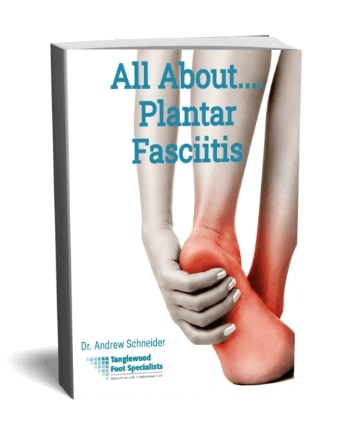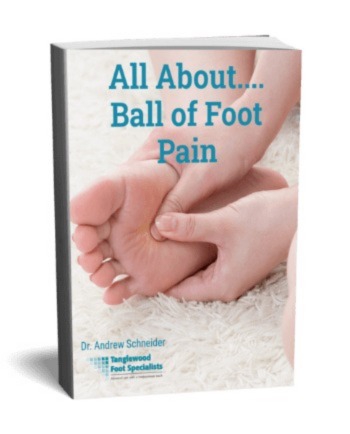What is Platelet Rich Plasma Therapy for Foot or Ankle Pain?
 Platelet Rich Plasma (PRP) is a treatment used to heal foot injuries. PRP is injected into the injured site, and helps speed up recovery. Injections are done by injecting platelets from your own blood into the injured tissue. This increases blood flow to the injured area. Blood clots form around the injured area, and help heal the injury.
Platelet Rich Plasma (PRP) is a treatment used to heal foot injuries. PRP is injected into the injured site, and helps speed up recovery. Injections are done by injecting platelets from your own blood into the injured tissue. This increases blood flow to the injured area. Blood clots form around the injured area, and help heal the injury.
Plasma is the fluid part of your blood. It carries the components of blood, including red and white blood cells, stem cells, and platelets. Plasma is also rich in proteins that help your body build new cells. Platelet Rich Plasma is a concentrated form of plasma. It has a higher concentration of platelets and proteins.
When PRP is injected into your injured foot or ankle, the proteins and platelets help to regenerate the injured tissue. It will help your body to recover naturally. PRP injections also help to provide pain relief.
Why Use Platelets?
The platelets are among the first cells to respond to an injury. They converge on an injury to repair damaged cells. Platelets are rich in growth factors, which help to attract other cells that function to repair damaged tissue.
Many of the structures in our foot and ankle have a poor blood supply. This is why healing is slow or incomplete. An injection of PRP brings the healing cells from your own blood to an area that has limited access to these factors.
What Conditions Respond to Platelet Rich Plasma Therapy?
 PRP is often used to treat musculoskeletal injuries of the foot and ankle. Common conditions that are effectively treated with Platelet Rich Plasma are:
PRP is often used to treat musculoskeletal injuries of the foot and ankle. Common conditions that are effectively treated with Platelet Rich Plasma are:
- Plantar Fasciitis and Fasciosis
- Achilles Tendinitis and Tendinosis
- Sprains
- Osteoarthritis
- Tendon injuries
- Post surgical pain
What is the Procedure for PRP Injections?
Before receiving a PRP injection, it is recommended that you stop all oral anti-inflammatory pain medication for about one week before the treatment. This is because anti-inflammatory medications, like ibuprofen or naprosyn, inhibit the production of platelets. This will lead to an injection that is not as concentrated as I would like.
When you come into the office, we'll draw a normal blood specimen. The vials of blood are placed in a centrifuge and spun very fast. This causes the blood to separate into its different components. The plasma layer at the top is siphoned off, leaving the portion of the plasma that has concentrated platelets and proteins. This layer is drawn into a syringe.
I first will inject the area with some numbing medicine. I'll then locate the area of inflammation by using diagnostic ultrasound. Under ultrasound guidance, I'll inject the PRP into the area with the damaged tissue.
What Can You Expect After a PRP Injection?
The Platelet Rich Plasma injection is an outpatient procedure done in our office. After the injection, you'll be able to go home immediately. I may ask you to take a break from exercise, athletics, and other strenuous activities for a few days.
Here's the good news...
There are virtually no side effects from a PRP injection. A few people feel irritation and mild pain, but most people have no problems after the treatment. That's because I'm just injection your own blood into the injured area. It's just a concentrated form with more blood platelets, more proteins, and more growth factors to stimulate and accelerate the healing process.
If you have discomfort after the treatment, you can take acetaminophen and use cold compresses to the area that was injected. It's important to avoid anti-inflammatory medication for 48 hours after the injection. Make sure you let us know if you're experiencing pain or swelling.
How PRP and Shockwave Therapy Work Together
 You may already be pursuing other forms of regenerative medicine as part of your treatment plan. One of these treatments is Extracorporeal Shockwave Therapy. This non-invasive treatment is used for similar indications as PRP. Sure, you can choose one or the other. But using both together can increase the speed of your recovery.
You may already be pursuing other forms of regenerative medicine as part of your treatment plan. One of these treatments is Extracorporeal Shockwave Therapy. This non-invasive treatment is used for similar indications as PRP. Sure, you can choose one or the other. But using both together can increase the speed of your recovery.
After your blood is drawn and while it's being processed, it's the perfect time for a 10 minute session of Shockwave therapy. During this treatment, thousands of mechanical shocks are sent to the injured area. This increases the blood flow and attracts healing tissue. The shockwave treatment helps to allow your body to receive this healing tissue.
This is where we get to cheat a little. Instead of waiting for your body to send resources to the area of injury, I'm injecting the Platelet Rich Plasma directly into the area. It's a sports medicine 1-2 punch to allow the tissues to regenerate and heal the injury.
Is PRP Therapy Covered by Health Insurance?
PRP, and most forms of regenerative medicine, is not covered by health insurance. I don't have a great explanation why not, other than the insurance business has not kept up with technology and proven scientific advances. Insurance will cover corticosteroid injections and surgical treatment for persistent pain. While sometimes effective, these treatments can weaken healthy structures.
Conversely, regenerative medicine like PRP works to repair cells and provide a more complete healing. The healing properties in a PRP injection will lead to stronger tissues. Overall this is a better option for treatment. It is certainly worth the investment.
Where Do I Get PRP Treatment for My Foot or Ankle Pain in Houston?
At Tanglewood Foot Specialists, we use the state-of-the-art XCell PRP system by Apex Biologix. I chose this system because of the high concentration of platelets and cells found in the Platelet-Rich Plasma Treatment that will be injected. A higher concentration has been proven to provide more lasting results.
Contact our Houston podiatry office to discuss if PRP is the right treatment option for you. You can also reach out to us online to request an appointment.

















